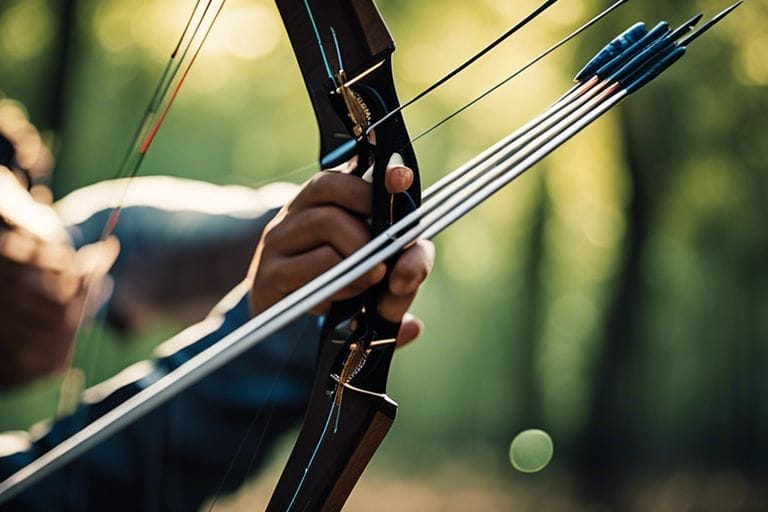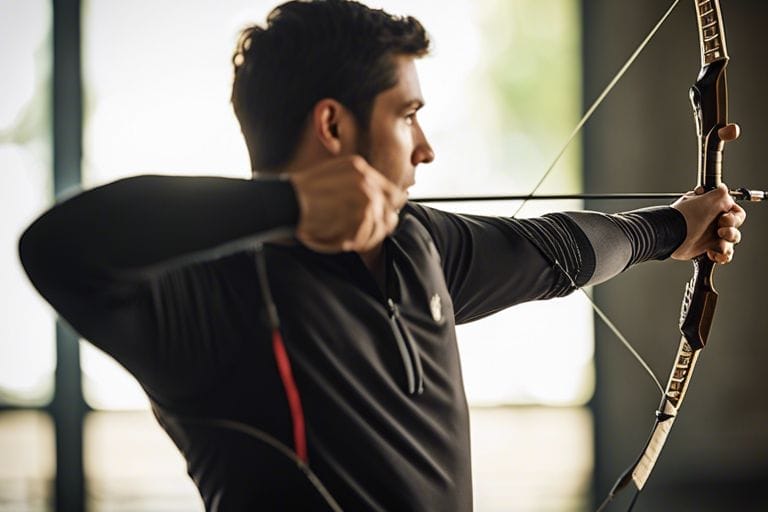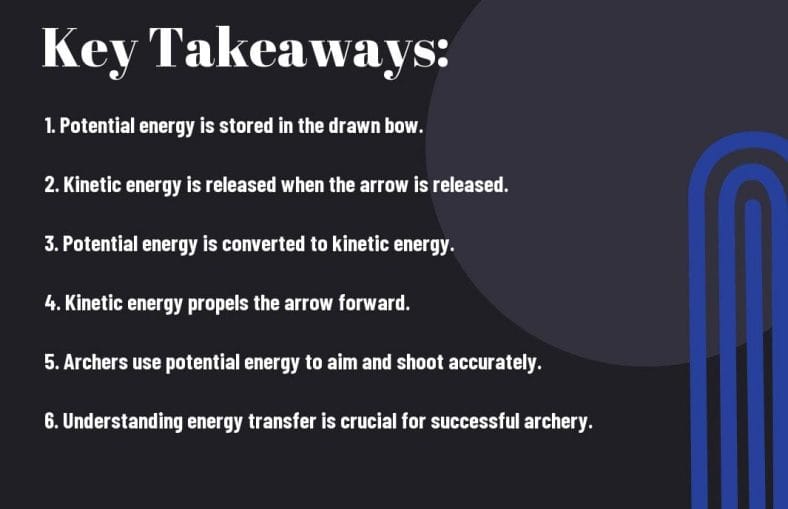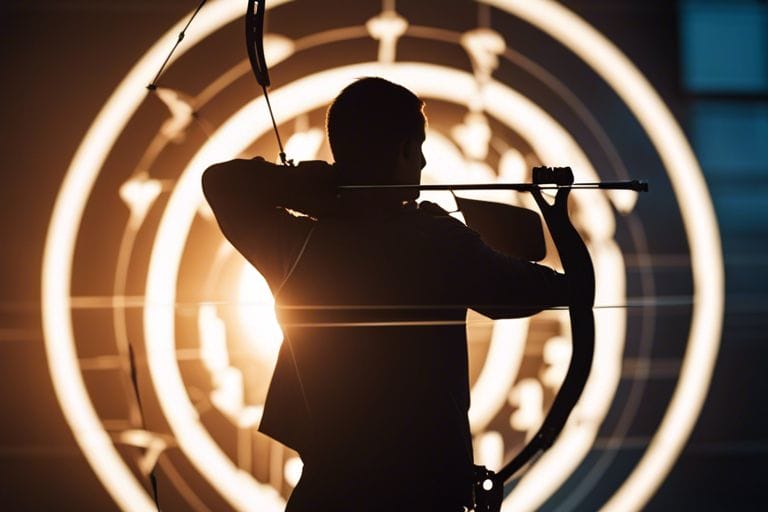You may have noticed that when you pull back the string of a bow and arrow, there is a certain amount of resistance and tension. This action actually stores potential energy in the bow, which is then converted into kinetic energy when the arrow is released. Understanding the relationship between potential and kinetic energy is crucial in mastering the art of archery. By harnessing these two types of energy, you can shoot with more accuracy and power. In this blog post, we will delve into the physics behind potential and kinetic energy in archery and how you can use this knowledge to improve your skills as an archer.
Key Takeaways:
- Potential energy: When an archer pulls back the bowstring, they are storing potential energy in the bow. This potential energy is converted to kinetic energy when the arrow is released, propelling it forward.
- Kinetic energy: Once the potential energy is released, the bowstring transfers its stored energy to the arrow, causing it to accelerate and move towards the target. The kinetic energy of the arrow is what allows it to penetrate the target upon impact.
- Combination of energies: The successful use of potential and kinetic energy in archery relies on the archer’s ability to control and harness the stored potential energy in the bow and transfer it into kinetic energy in the arrow in a precise and consistent manner, ultimately leading to accurate and powerful shots.

Understanding Energy in Physics
One of the most popular examples of potential and kinetic energy in action is in the sport of archery. When you draw back the string of a bow, you are storing potential energy, which is then converted into kinetic energy as you release the arrow. This process requires a clear understanding of the physics of energy and its transformation, making it an excellent case study for this topic. For a detailed demonstration of the principles of potential and kinetic energy in archery, you can view the “Bow and Arrow” presentation at Harvard University’s Science Demonstrations website here.
Definition of Potential Energy
Potential energy is simply the stored energy an object has due to its position or state. In the case of archery, when you pull back the bowstring, you are doing work on the arrow by applying a force over a distance, thus storing potential energy in the bow. The potential energy of the bow and arrow system is at its maximum when the bowstring is at full draw.
Definition of Kinetic Energy
Kinetic energy, on the other hand, is the energy an object possesses due to its motion. When you release the bowstring, the potential energy stored in the bow is converted into kinetic energy as the arrow is propelled forward. The arrow gains speed and its kinetic energy increases as it moves through the air toward its target. In this way, the potential energy stored in the bow is transformed into kinetic energy, allowing the arrow to travel with force and accuracy.
By understanding the concepts of potential and kinetic energy in the context of archery, you can appreciate how these principles apply to other areas of physics and the natural world. This understanding can also help you improve your skills as an archer by optimizing the use of potential and kinetic energy in your shots.
Potential Energy in Archery
The concept of potential energy is crucial in understanding how an archer’s bow works. Potential energy is the energy that an object possesses due to its position or state, and in archery, this energy is stored in the bow when it is drawn. It is the potential energy stored in the bow that is ultimately transformed into the kinetic energy of the arrow when it is released.
Storing Energy in the Bow
When you pull back the string of the bow, you are storing potential energy in the limbs of the bow. As the string is drawn back, the bow is flexed, and the limbs are bent. This action causes the limbs to store the potential energy that will be used to propel the arrow forward. The more you pull back the string, the more potential energy is stored in the bow, resulting in a more powerful shot when the arrow is released.
Factors Affecting Potential Energy
Several factors can affect the amount of potential energy that can be stored in an archer’s bow. The weight and stiffness of the bow, the draw length, and the draw weight all play a significant role in determining the potential energy stored. Additionally, the weight and design of the arrow also impact the amount of potential energy that is transferred to the arrow upon release. Perceiving your bow’s capabilities and understanding how different factors influence potential energy can help you optimize your archery performance.
- Weight and stiffness of the bow
- Draw length and draw weight
- Weight and design of the arrow

Kinetic Energy in Archery
Not only does potential energy play a crucial role in archery, but kinetic energy is also a key component in the smooth release of an arrow. As you draw back the bowstring, you are exerting potential energy, but when you release the arrow, it is the kinetic energy that propels it forward.
Transformation from Potential to Kinetic Energy
As you draw the bowstring back, you are storing potential energy in the limbs of the bow. When you release the string, this potential energy is converted into kinetic energy, causing the arrow to move forward. This transformation is a critical part of the archery process and showcases the interplay between potential and kinetic energy.
Influence of Kinetic Energy on Arrow Speed and Trajectory
The amount of kinetic energy generated in the bowstring greatly impacts the speed and trajectory of the arrow. The more kinetic energy that is transferred to the arrow, the faster and further it will travel. Understanding the influence of kinetic energy on arrow speed and trajectory can help you fine-tune your technique for more accurate and powerful shots.
Application and Techniques
To fully understand the usage of potential energy and kinetic energy in archery, it’s essential to delve into the application and techniques involved. Utilizing these energies effectively can significantly impact the accuracy and power of your shots, ultimately improving your overall performance as an archer.
Maximizing Energy Efficiency
When it comes to maximizing energy efficiency in archery, there are several key techniques that can greatly impact the velocity and accuracy of your shot. Firstly, the draw length plays a crucial role in determining the amount of potential energy stored in the bow. By consistently achieving your maximum draw length, you ensure that the bowstring is fully stretched, thereby maximizing the potential energy stored. Additionally, using a well-tuned bow and matching arrows can minimize the energy lost during the transfer, resulting in improved kinetic energy and a more precise shot.
Tips for Improved Energy Management in Archery
For improved energy management in archery, it’s important to focus on your form and technique. Proper posture and alignment are essential in maintaining a consistent release, which directly impacts the transfer of potential energy to kinetic energy. Another crucial aspect is the timing of your release. By mastering the release timing, you can effectively harness the stored potential energy, translating it into kinetic energy with precision and power. In addition, incorporating a smooth and controlled release technique minimizes unnecessary energy loss, maximizing the efficiency of your shot. Knowing when to exert energy and when to conserve it is the key to achieving optimal performance in archery.
- Focus on achieving maximum draw length
- Use a well-tuned bow and matching arrows
- Maintain proper posture and alignment
- Master the release timing for effective energy transfer
- Incorporate a smooth and controlled release technique

Conclusion
With these considerations, you can see how potential energy and kinetic energy play crucial roles in archery. The potential energy stored in the bow is converted into kinetic energy as the arrow is released, propelling it forward towards its target. Understanding these principles can help you improve your accuracy and power as an archer, as you learn to manipulate and harness the energy involved in the sport. By mastering the relationship between potential and kinetic energy, you can enhance your performance and overall skill in archery. So next time you pick up your bow, remember the important role that energy plays in your success.
FAQ
Q: What is potential energy in archery?
A: Potential energy in archery refers to the stored energy that is present in the bow when it is drawn back. This potential energy is the result of the work done in pulling the bowstring back, and it is ready to be released when the archer lets go of the string.
Q: How is potential energy used in archery?
A: Potential energy in archery is crucial in providing the force necessary to propel the arrow forward. When the archer releases the bowstring, the potential energy stored in the bow is transformed into kinetic energy, which propels the arrow towards the target with the desired speed and force.
Q: What is kinetic energy in archery?
A: Kinetic energy in archery is the energy that the arrow possesses while in motion. As the arrow leaves the bowstring, the potential energy is converted into kinetic energy, causing the arrow to move forward. The kinetic energy determines the speed and impact force of the arrow upon hitting the target.


